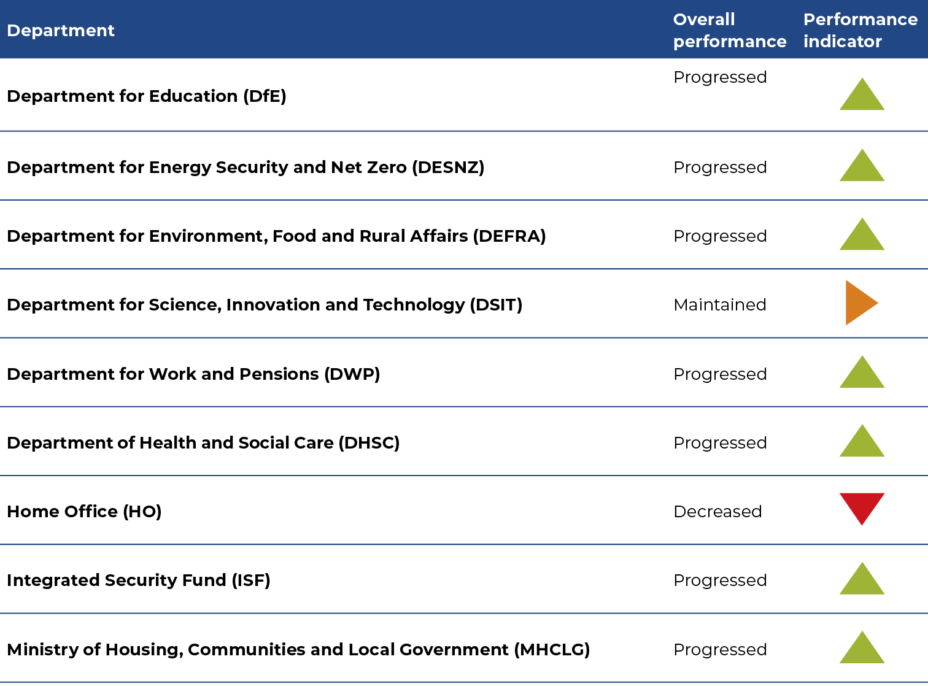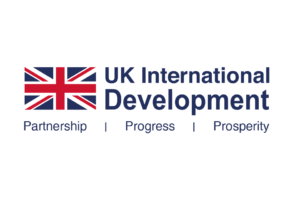UK Aid Transparency
The 2025 UK Aid Transparency Review, led by Publish What You Fund and commissioned by the UK government, evaluates the transparency of Official Development Assistance (ODA) spending by government departments beyond the Foreign, Commonwealth and Development Office (FCDO). This review builds on previous assessments, including the 2020 review, and aligns with commitments to the Open Government Partnership. The review aims to support departments to improve their transparency by engaging through constructive feedback and practical guidance to encourage publication of better quality and more timely data.
The UK’s aid transparency commitments
The UK has long set high targets for transparency of ODA through its commitments in UK policy, including the Integrated Review of Security, Defence, Development and Foreign Policy and the International Development Strategy. The FCDO was set the target of achieving a ‘very good’ score in Publish What You Fund’s Aid Transparency Index, which it achieved in 2024. As part of its Open Government Partnership 2024-25 National Action Plan, the UK government committed to improving the transparency of non-FCDO departments, seeking to build on the 2020 aid transparency review, to re-engage these departments and improve publishing practices. The FCDO has played a leading and co-ordinating role in the review.
Our 2025 review
Our review examined ODA data disclosed in 2024–2025 using the Aid Transparency Index methodology, adapted to provide a tailored approach. We focused on progress made by departments since they were last assessed. It covers nine departments with ODA outlays above £50 million, excluding FCDO and other bodies recently assessed. Five main components structure the review: basic information, financial data, procurement practices, organisational documents, and results or impact reporting. All departments participated in a two-stage evaluation, allowing initial feedback, engagement and the opportunity for targeted improvements.
Our 2025 findings

The review, Progress and Gaps: Transparency of UK Aid Beyond the FCDO, was published in October 2025. The findings show eight departments increased or maintained transparency.
Several departments made notable improvements in publishing their aid activity data via the International Aid Transparency Initiative (IATI) Standard. First-time IATI publishers – Integrated Security Fund and Ministry of Housing, Communities and Local Government (MHCLG) – successfully added new information. Department for Energy Security and Net Zero and Department for Environment, Food and Rural Affairs expanded their published results data, while Department of Health and Social Care sustained a strong overall output. Department for Science, Innovation and Technology maintained a good baseline but lacked impact and finance data.
The Home Office was the only department to decline in its transparency, publishing less than before and failing to update or provide data on its current activities.
Departments with in-donor refugee costs (Department for Work and Pensions, Department for Education, and MHCLG) and which manage their aid domestically, particularly through local authorities, did well but still had some challenges due to missing forward-looking budgets.
During the review process, the departments published an additional 500 activities valued at £468 million in the IATI Standard. This means that 37% of their ODA spending is now visible in IATI, up from 29% in the 2020 review. However, between the reviews (in 2023) the visibility of non-FCDO ODA spending had fallen to just 4%.
While this review has successfully encouraged greater aid transparency, the UK government should institutionalise the continuation of these practices in the longer term. We also recommend improving disclosure of results and evaluation data, and the reliability and forward visibility of domestic ODA budgets.
Our 2020 findings
“How Transparent is UK Aid? A review of ODA spending departments” was published in January 2020 and presented the findings of our review of ten aid-spending departments using our Aid Transparency Index methodology. We also reviewed the transparency of the Conflict, Stability and Security Fund and Prosperity Fund.
Three of the 10 departments scored ’Good’ or ‘Very Good’ in the review, meeting the target set out in the UK 2015 Aid Strategy. We found encouraging signs of improvement on data publication and commitment to transparency over the course of the review, but overall results were mixed.
The review highlighted a lack of available information on the results and impact of aid spending. Performance data was the poorest scoring.
The highest scores came from data on implementing partners used in aid projects, followed by high publication rates on aid types as well as financial figures showing project payments made. The report contained a number of recommendations for improvement for the assessed departments and funds.

This project was funded with UK International Development from the UK government.

